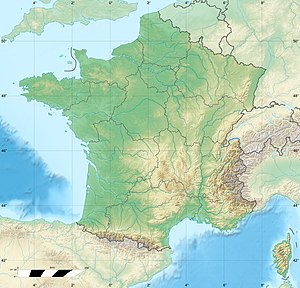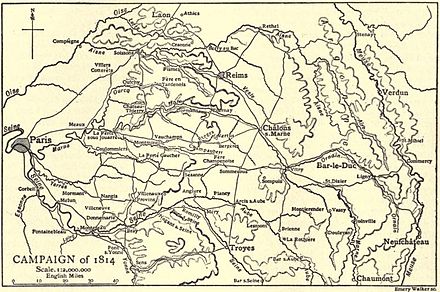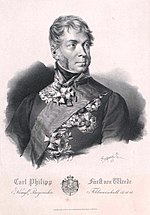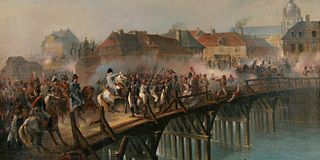
The Battle of Arcis-sur-Aube saw an Imperial French army under Napoleon face a much larger Allied army led by Karl Philipp, Prince of Schwarzenberg during the War of the Sixth Coalition. On the second day of fighting, Emperor Napoleon finally realized he had blundered into battle as he was massively outnumbered, and immediately ordered a masked retreat. By the time the Austrian Field Marshal Schwarzenberg realized Napoleon was retreating, most of the French had already disengaged and the Allied pursuit afterwards failed to prevent the remaining French army from safely withdrawing to the north. This was Napoleon's penultimate battle before his abdication and exile to Elba, the last being the Battle of Saint-Dizier.

The Battle of Brienne saw an Imperial French army led by Emperor Napoleon attack Prussian and Russian forces commanded by Prussian Field Marshal Gebhard Leberecht von Blücher. After heavy fighting that went on into the night, the French seized a château, nearly capturing Blücher. However, the French were unable to dislodge the Russians from the town of Brienne-le-Château. Napoleon himself, making his first appearance on a battlefield in 1814, was also nearly captured. Very early the next morning, Blücher's troops quietly abandoned the town and retreated to the south, conceding the field to the French.
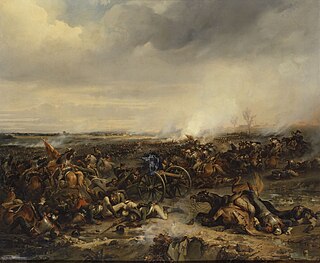
The Battle of Champaubert was the opening engagement of the Six Days' Campaign. It was fought between a French army led by Emperor Napoleon and a small Russian corps commanded by Lieutenant General Count Zakhar Dmitrievich Olsufiev. After putting up a good fight, the Russian formation was destroyed; the survivors escaped into the woods while Olsufiev became a French prisoner. Champaubert is located in France, 46 kilometres (29 mi) west of Châlons-en-Champagne and 69 kilometres (43 mi) east of Meaux.

The Battle of Craonne was a battle between an Imperial French army under Emperor Napoleon I opposing a combined army of Imperial Russians and Prussians led by Prussian Field Marshal Gebhard Leberecht von Blücher. The War of the Sixth Coalition engagement began when the bulk of Napoleon's army tried to drive Mikhail Semyonovich Vorontsov's 22,000 Russians off the Chemin des Dames plateau to the west of Craonne. After a bitter struggle, Napoleon's attacks compelled Vorontsov's force to withdraw, but French casualties exceeded Russian losses. While the battle raged, Blücher's attempt to turn Napoleon's east flank ended in failure due to poor planning.

The Battle of Dresden was a major engagement of the Napoleonic Wars. The battle took place around the city of Dresden in modern-day Germany. With the recent addition of Austria, the Sixth Coalition felt emboldened in their quest to expel the French from Central Europe. Despite being heavily outnumbered, French forces under Napoleon scored a victory against the Army of Bohemia led by Generalissimo Karl von Schwarzenberg. However, Napoleon's victory did not lead to the collapse of the coalition, and the weather and the uncommitted Russian reserves who formed an effective rear-guard precluded a major pursuit. Three days after the battle, the Allies surrounded and destroyed a French corps advancing into their line of withdrawal at the Battle of Kulm.

The Battle of Montereau was fought during the War of the Sixth Coalition between an Imperial French army led by Emperor Napoleon and a corps of Austrians and Württembergers commanded by Crown Prince Frederick William of Württemberg. While Napoleon's army mauled an Allied army under Gebhard Leberecht von Blücher, the main Allied army commanded by Karl Philipp, Prince of Schwarzenberg, advanced to a position dangerously close to Paris. Gathering up his outnumbered forces, Napoleon rushed his soldiers south to deal with Schwarzenberg. Hearing of the approach of the French emperor, the Allied commander ordered a withdrawal, but on 17 February saw his rear guards overrun or brushed aside.

The Battle of Montmirail was fought between a French force led by Emperor Napoleon and two Allied corps commanded by Fabian Wilhelm von Osten-Sacken and Ludwig Yorck von Wartenburg. In hard fighting that lasted until evening, French troops including the Imperial Guard defeated Sacken's Russian soldiers and compelled them to retreat to the north. Part of Yorck's Prussian I Corps tried to intervene in the struggle but it was also driven off. The battle occurred near Montmirail, France, during the Six Days Campaign of the Napoleonic Wars. Montmirail is located 51 kilometres (32 mi) east of Meaux.

The Battle of Mormant was fought during the War of the Sixth Coalition between an Imperial French army under Emperor Napoleon I and a division of Russians under Count Peter Petrovich Pahlen near the town of Mormant, some 50 km (31 mi) southeast of Paris. Pahlen's outnumbered force was enveloped by cavalry and infantry, and nearly destroyed, with only about a third of its soldiers escaping.

The Battle of Château-Thierry saw the Imperial French army commanded by Emperor Napoleon attempt to destroy a Prussian corps led by Ludwig Yorck von Wartenburg and an Imperial Russian corps under Fabian Wilhelm von Osten-Sacken. The two Allied corps managed to escape across the Marne River, but suffered considerably heavier losses than the pursuing French. This action occurred during the Six Days' Campaign, a series of victories that Napoleon won over Prussian Field Marshal Gebhard Leberecht von Blücher's Army of Silesia. Château-Thierry lies about 75 kilometres (47 mi) northeast of Paris.
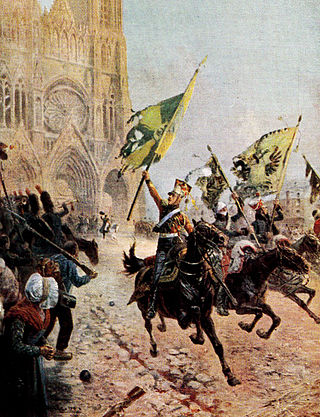
The Battle of Reims was fought at Reims, France between an Imperial French army commanded by Emperor Napoleon and a combined Russian-Prussian corps led by General Emmanuel de Saint-Priest. On the first day, Saint-Priest's Russians and General Friedrich Wilhelm von Jagow's Prussians easily captured Reims from its French National Guard garrison, capturing or killing more than half of its defenders. On the second day, an overconfident Saint-Priest carelessly deployed his forces west of the city, not grasping that Napoleon was approaching with 20,000 troops. Too late, Saint-Priest realized who he was fighting and tried to organize a retreat. In the battle that followed, the French army struck with crushing force and the Allies were routed with serious losses. During the fighting, Saint-Priest was struck by a howitzer shell and died two weeks later.

The Battle of La Rothière was fought on 1 February 1814 between the French Empire and the allied armies of Austria, Prussia, Russia, and German States that were previously allied with France, taking place during severe weather conditions. The French were led by Emperor Napoleon, and the coalition army was under the command of Gebhard Leberecht von Blücher. The French were defeated, but they managed to hold until they could retreat under cover of darkness.

The Battle of Bar-sur-Aube was fought on 27 February 1814, between the First French Empire and the Austrian Empire. French forces were led by Jacques MacDonald, while the Austrians and their Bavarian allies, forming the Army of Bohemia, were led by Karl Philipp Fürst zu Schwarzenberg. The Austrians were victorious.

The Battle of Fère-Champenoise was fought between two Imperial French corps led by Marshals Auguste de Marmont and Édouard Mortier, duc de Trévise and a larger Coalition force composed of cavalry from the Austrian Empire, Kingdom of Prussia, Kingdom of Württemberg, and Russian Empire. Caught by surprise by Field Marshal Karl Philipp, Prince of Schwarzenberg's main Coalition army, the forces under Marmont and Mortier were steadily driven back and finally completely routed by aggressive Allied horsemen and gunners, suffering heavy casualties and the loss of most of their artillery. Two divisions of French National Guards under Michel-Marie Pacthod escorting a nearby convoy were also attacked and wiped out in the Battle of Bannes. The battleground was near the town Fère-Champenoise located 40 kilometres (25 mi) southwest of Châlons-en-Champagne.
The VI Cavalry Corps of the Grande Armée was a French military unit that had an ephemeral existence during the Napoleonic Wars. The corps was created on 9 February 1814 and General François Étienne de Kellermann was appointed as its commander. The corps was formed by combining a newly arrived dragoon division from the Spanish front, a second dragoon division, and a light cavalry division made up of hussars and Chasseurs-à-Cheval. The latter two divisions included units from the former III Cavalry Corps. Kellermann led the VI Cavalry Corps at Mormant, Troyes, Bar-sur-Aube, Laubressel, and Saint-Dizier. After Emperor Napoleon Bonaparte abdicated in early April, the corps ceased to exist.

The Battle of Gué-à-Tresmes was fought between 14,500 French troops led by Marshals Auguste de Marmont and Édouard Mortier and 12,000 Prussians commanded by Friedrich Graf Kleist von Nollendorf and Friedrich von Katzler. On 28 February the French attacked and drove the Prussians to the north along the west bank of the river Ourcq. That evening and the next day Kleist tried to push the French back while Russian units under Peter Mikhailovich Kaptzevich tried to cross from the east to the west bank of the Ourcq; the Allies were unsuccessful. Gué-à-Tresmes is located where Route D405 crosses the Thérouanne stream about 10 kilometres (6.2 mi) northeast of Meaux.

The First Battle of Bar-sur-Aube was fought during the War of the Sixth Coalition when Marshal Édouard Mortier, duc de Trévise's corps of French Imperial Guards defended against an Austrians corps under Ignaz Gyulai and a Württemberger corps led by Crown Prince Frederick William of Württemberg. After holding his main defensive positions in stiff fighting, Mortier withdrew his elite troops during the night and retreated to Troyes. Bar-sur-Aube is located 53 kilometres (33 mi) east of Troyes.

François Pierre Joseph, baron Amey became a French division commander during the Napoleonic Wars. He enlisted in the French Royal Army in 1783 and joined a volunteer battalion in 1792. He won promotion to general of brigade in 1793 during the War in the Vendée. He held a command during the period of the infernal columns and his career became obscure until 1799 when he supported Napoleon's coup. He went on the Saint-Domingue expedition in 1802–1803 and later filled posts in the interior. In 1806–1807 he led a brigade at Jena, Golymin and Eylau where he was wounded.
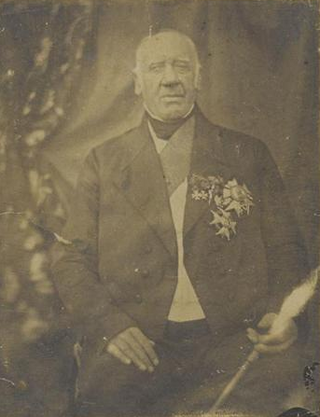
Baron Henri Rottembourg became a French division commander late in the Napoleonic Wars. He enlisted in an infantry regiment of the French Royal Army in 1784 and was promoted to first lieutenant by 1792. During the War of the First Coalition from 1793 to 1797 he fought mostly in the Army of Sambre-et-Meuse. He was wounded at Verona in 1799 and fought on the Var and at the Mincio in 1800. He transferred to the Imperial Guard in 1806 before fighting at Jena and being named to command an infantry regiment. In 1809 he was wounded at Wagram.

The Six Days' Campaign saw four victories by the Imperial French army led by Napoleon over the Army of Silesia commanded by Prussian Field Marshal Gebhard Leberecht von Blücher. Between 10 and 15 February 1814, the French inflicted losses of at least 14,034 men and 52 guns on the Army of Silesia. A second estimate listed 16,000 casualties and 60 guns. A third estimate reached as high as 20,000 casualties, but a calculation by historian George Nafziger suggested that Blücher may have lost 28,500 soldiers.
The Treaty of Troyes was an agreement of 22 February 1814 by Austria, Russia and Prussia following a council of war with senior generals, Tsar Alexander I of Russia and King Frederick William III of Prussia. The treaty determined the movements of the Austrian and Prussian-Russian armies following a series of defeats during the invasion of north-east France. Despite dissent from the Russian and Prussian leaders, Austrian General Karl Philipp, Prince of Schwarzenberg secured support for a withdrawal ahead of the French forces of Emperor Napoleon I who was seeking to bring the allies to battle.

